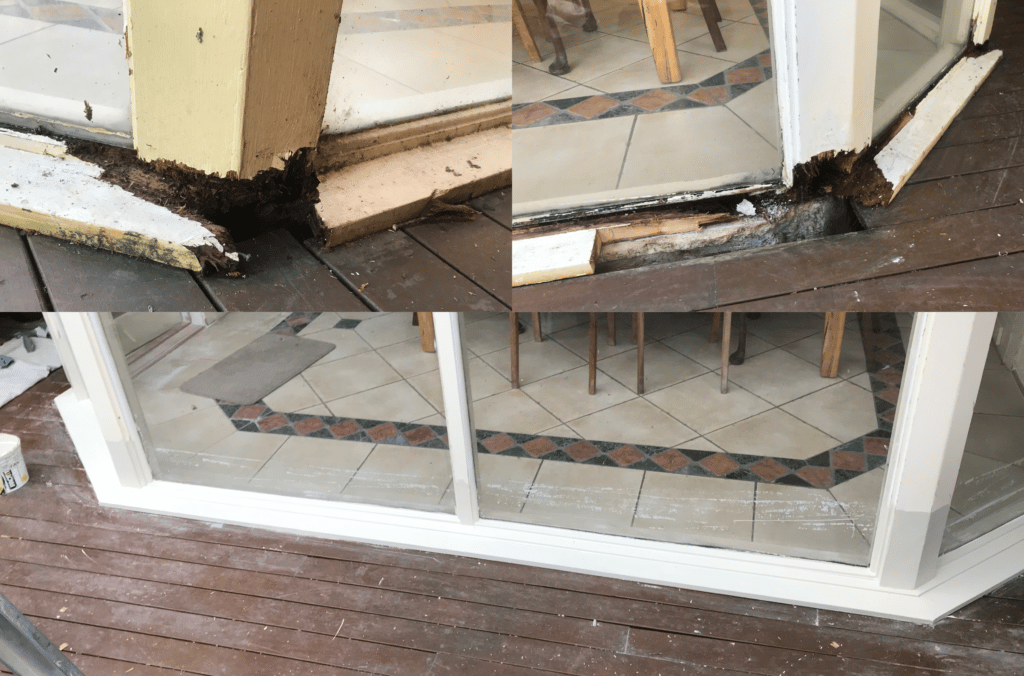Stop the Rot completed a structural wood rot repair job last month that reflected many that we had completed in the past; let’s call them the Smiths.
The Smiths live in a four-bedroom home in Malvern that had previously housed the couple and their three kids. Now, as empty-nesters, they’re getting the house ready to sell and have decided to tick off structural wood rot repair from their list. This is a problem they have been delaying for a couple of years.
The typical wood rot case study
The Smith’s and their four-bedroom home reflects a situation we see time and time again. The Smith’s got busy with life (as we all do) and fixing their structural wood rot got overlooked as a result of higher priorities. The wood rot kept spreading through places the family could and couldn’t see, so when Stop the Rot arrived, they were a few months away from needing to remove that whole section of their house.
We wanted to unpack this case study to demonstrate why it’s important to get your structural wood rot repaired sooner rather than later.
A summary of their structural wood rot:
- Repaired wood rot whilst redesigning their structures to prevent another repair in the future
- Maintained the original design of the home
- Saved the Smiths from rebuilding, saving them a large cost
Who is the client?
Here’s why:
Their wood rot problems
There were two main parts of the Smiths home that were compromised due to this poor design: the atrium and the fixed frame window.
Firstly we repaired the atrium window.While many atriums leak, this one was left for so long with an especially poor design that the wood rot was moving into the structure timber of the home. The window needed to be fixed, but also, needed to be redesigned. The atrium’s rot was the result of three main issues.
- The Smiths atrium sat on a flat sill and a deck has been built buting up to the sill. This had compromised the water flow off the sill meaning rainwater was now hitting the sill and pooling. All that water gradually soaked into the timber, leaving the window frame and structural timbers in need of structural wood rot repair.
- The atrium’s batons were leaking. Water was running down the inside of the windows, rotting the internal structural timbers inside the house. This caused their internal sill, floorboards and other structural timber inside their home to rot.
- The lack of paint and general maintenance (like most of us are guilty of). The reason 90% of Stop the Rot’s jobs happen on western side of the home is because that strong afternoon setting sun fades and blisters the paint away. Paint is impervious to moisture, so once the paint is compromised, so is your protection to wood rot.
Our focus then shifted to the fixed frame window. It looked a little like these windows.

This was a different type of issue but required just as much structural wood rot repair. When the house was built, the transom (horizontal timber between two windows) was sloped to ensure water would run away from the home. Then, the Smiths installed an external awning. The awning was installed slightly proud of the transom, and thus pooled the rainwater allowing it to seep into the structure. When Stop the Rot got to the Smiths home, the top of the window frame was essentially ‘mulch’ and needed intensive structural wood rot repair.
The next steps in restoring their windows
Once we identified the problems; this is what the next steps were.
- Strip back rotten timbers
- We don’t know how far through the rot is, so we strip back the timber until we find unaffected timber.
- We establish the source/cause of the rot
- We plan the strategy/process
- We joint the new timbers measured and prepared in our warehouse to the structurally strong timber remained in the window, and complete the job
- Hold a sign off meeting
Discover our unique 9 step process
explains how we restore your windows back to their original condition!
If they left it longer...
With a couple of other frames, this job costs the Smiths $8,500. If they had called us 2 years ago when they first noticed the problem, it would have cost $2,000, but if they had left it 2 more years, it could have cost upwards of $100,000.
Don’t leave your wood rot, it won’t fix itself.
Contact us here to get a no-obligation quote. Stop The Rot is cheaper than pulling down a part of your house.

